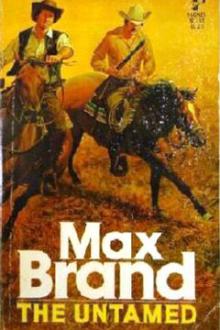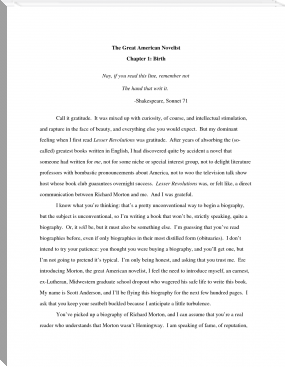The Antiquary — Complete, Walter Scott [best novels for beginners .TXT] 📗

- Author: Walter Scott
Book online «The Antiquary — Complete, Walter Scott [best novels for beginners .TXT] 📗». Author Walter Scott
The simple unsought charm which Lockhart notes in “The Antiquary” may have passed away in later works, when what had been the amusement of happy days became the task of sadness. But this magic “The Antiquary” keeps perhaps beyond all its companions,—the magic of pleasant memories and friendly associations. The sketches of the epoch of expected invasion, with its patriotic musters and volunteer drillings, are pictures out of that part in the author’s life which, with his early Highland wanderings (“Waverley”) and his Liddesdale raids (“Guy Mannering”), was most dear to him. In “Redgauntlet,” again, he makes, as Alan Fairford, a return on his youth and his home, and in “Rob Roy” he revives his Highland recollections, his Highland lairds of “the blawing, bleezing stories.” None of the rest of the tales are so intimate in their connection with Scott’s own personal history. “The Antiquary” has always, therefore, been held in the very first rank of his novels.
As far as plot goes, though Godwin denied that it had any story, “The Antiquary” may be placed among the most careful. The underplot of the Glenallans, gloomy almost beyond endurance, is very ingeniously made to unravel the mystery of Lovel. The other side-narrative, that of Dousterswivel, is the weak point of the whole; but this Scott justifies by “very late instances of the force of superstitious credulity, to a much greater extent.” Some occurrence of the hour may have suggested the knavish adept with his divining-rod. But facts are never a real excuse for the morally incredible, or all but incredible, in fiction. On the wealth and vraisemblance and variety of character it were superfluous to dilate. As in Shakspeare, there is not even a minor person but lives and is of flesh and blood, if we except, perhaps, Dousterswivel and Sir Arthur Wardour. Sir Arthur is only Sir Robert Hazlewood over again, with a slightly different folly and a somewhat more amiable nature. Lovel’s place, as usual, is among the shades of heroes, and his love-affair is far less moving, far more summarily treated, than that of Jenny Caxon. The skilful contrasts are perhaps most remarkable when we compare Elspeth of the Burnfoot with the gossiping old women in the post-office at Fairport,—a town studied perhaps from Arbroath. It was the opinion of Sydney Smith that every one of the novels, before “The Fortunes of Nigel,” contained a Meg Merrilies and a Dominie Sampson. He may have recognized a male Meg in Edie Ochiltree,—the invaluable character who is always behind a wall, always overhears everything, and holds the threads of the plot. Or he may have been hypercritical enough to think that Elspeth of the Burnfoot is the Meg of the romance. Few will agree with him that Meg Merrilies, in either of these cases, is “good, but good too often.”
The supposed “originals” of certain persons in the tale have been topics of discussion. The character of Oldbuck, like most characters in fiction, is a combination of traits observed in various persons. Scott says, in a note to the Ashiestiel fragment of Autobiography, that Mr. George Constable, an old friend of his father’s, “had many of those peculiarities of character which long afterwards I tried to develop in the character of Jonathan Oldbuck.” Sir Walter, when a child, made Mr. Constable’s acquaintance at Prestonpans in 1777, where he explored the battle-field “under the learned guidance of Dalgetty.” Mr. Constable first introduced him to Shakspeare’s plays, and gave him his first German dictionary. Other traits may have been suggested by John Clerk of Eldin, whose grandfather was the hero of the story “Praetorian here, Praetorian there, I made it wi’ a flaughter spade.” Lockhart is no doubt right in thinking that Oldbuck is partly a caricature of Oldbuck’s creator,—Sir Walter indeed frankly accepted the kinship; and the book which he began on his own collection he proposed to style “Reliquim Trotcosienses; or, the Gabions of Jonathan Oldbuck.”
Another person who added a few points to Oldbuck was “Sandy Gordon,” author of the “Itinerarium Septentrionale” (1726), the very folio which Monkbarns carried in the dilatory coach to Queensferry. Gordon had been a student in the University of Aberdeen; he was an amateur in many arts, but antiquarianism was his favourite hobby. He was an acquaintance of Sir John Clerk of Eldin, the hero of the Praetorium. The words of Gordon in his “Itinerarium,” where he describes the battle of the Grampians, have supplied, or suggested, the speech of Monkbarns at the Kaim of Kinprunes. The great question was, Where is the Mons Grampius of Tacitus? Dismissing Camden’s Grantsbain, because he does not know where it is, Gordon says, “As for our Scotch Antiquaries, they are so divided that some will have it to be in the shire of Angus, or in the Mearns, some at the Blair of Athol in Perthshire, or Ardoch in Strathallan, and others at Inverpeffery.” Gordon votes for Strathern, “half a mile short of the Kirk of Comrie.” This spot is both at the foot of the Montes Grampii, “and boasts a Roman camp capable of holding an army fit to encounter so formidable a number as thirty thousand Caledonians. . . . Here is the Porta Decumana, opposite the Prcetoria, together with the dextra and sinistra gates,” all discovered by Sandy Gordon. “Moreover, the situation of the ground is so very exact with the description given by Tacitus, that in all my travels through Britain I never beheld anything with more pleasure. . . . Nor is it difficult, in viewing this ground, to say where the Covinarii, or Charioteers, stood. In fine, to an Antiquary, this is a ravishing scene.” He adds the argument “that Galgacus’s name still remains on this ground, for the moor on which the camp stood is called to this day Galdachan, or Galgachan Rosmoor.” All this lore Gordon illustrates by an immense chart of a camp, and a picture of very small Montes Grampii, about the size and shape of buns. The plate is dedicated to his excellency General Wade.
In another point Monkbapns borrows from Gordon. Sandy has a plate (page 20) of “The Roman Sacellum of Mars Signifer, vulgarly called ‘Arthur’s Oon.’ With regard to its shape, it is not unlike the famous Pantheon at Rome before the noble Portico was added to it by Marcus Agrippa.” Gordon agrees with Stukeley in attributing Arthur’s Oon to Agricola, and here Monkbarns and Lovel adopt almost his words. “Time has left Julius Agricola’s very name on the place; . . . and if ever those initial letters J. A. M. P. M. P. T., mentioned by Sir Robert Sibbald, were engraven on a stone in this building, it may not be reckoned altogether absurd that they should bear this reading, JULIUS AGRICOLA MAGNUS PIETATIS MONUMENTUM POSUIT TEMPLUM; but this my reader may either accept or reject as he pleases. However, I think it may be as probably received as that inscription on Caligula’s Pharos in Holland, which having these following letters, C. C. P. F., is read Caius Caligula Pharum Fecit.” “This,” Monkbarns adds, “has ever been recorded as a sound exposition.”
The character of Edie Ochiltree, Scott himself avers to have been suggested by Andrew Gemmells, pleasantly described in the Introduction. Mr. Chambers, in “Illustrations of the Author of ‘Waverley,” clears up a point doubtful in Scott’s memory, by saying that Geimells really was a Blue-Gown. He rode a horse of his own, and at races was a bookmaker. He once dropped at Rutherford, in Teviotdale, a clue of yarn containing twenty guineas. Like Edie Ochiltree, he had served at Fontenoy. He died at Roxburgh Newton in 1793, at the age of





Comments (0)